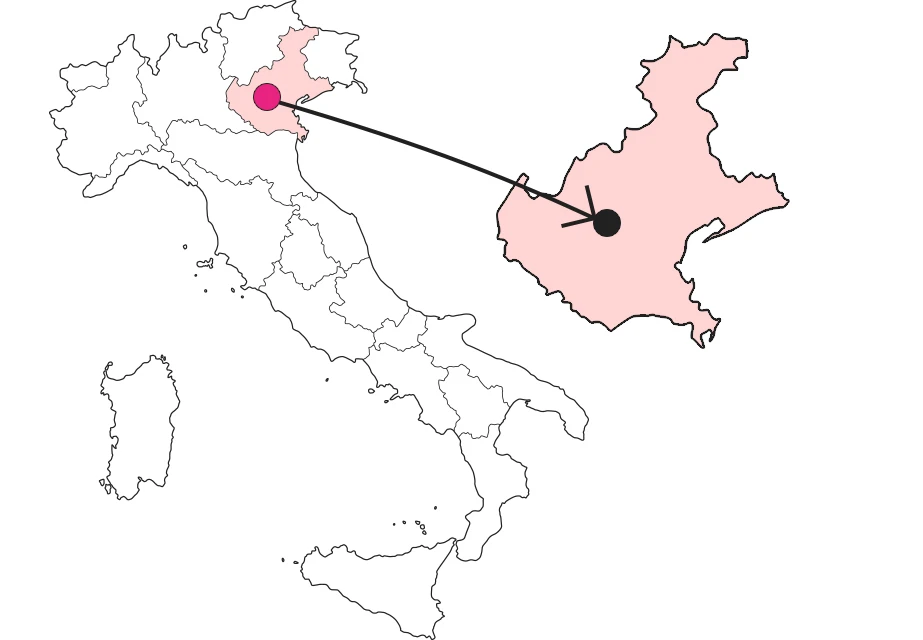











The treasures of St. Julian's Church
Palladian at first glance, Baroque beyond the threshold: the unexpected wonders of an out-of-town church



Where

What it is and where it is
San Giuliano was the church in front of which wayfarers marked themselves just before entering the city from Porta Padova; documented since the 14th century, it was rebuilt in the late 17th century by the Friars Minor of St. Francis of Paola, active in the hospital attached to their monastery. The signature is by Pizzocaro (1605-1680), one of the most faithful interpreters of the style initiated by Andrea Palladio in the previous century. The facade shows this in the development of tall Corinthian pilasters supporting a triangular tympanum; on the ridge three statues by another Vicenza master, Angelo Marinali (1654 -1702): St. Julian in the center; St. Francis of Paola and St. Vincent on either side.
Why it is special
Astonishing--noble on the outside, even sumptuous beyond the threshold: a single nave, wide and bright, Palladian in structure but Baroque in its sumptuous marble altars. Imposing, at the focal point, is the high altar, surmounted by five statues-Christ Resurrected among Saints Julian, Francis of Paola, Gaetano and Vincent; behind them, the wooden choir, so that the sacred figures loom over a precious vocal background. Halfway up the right wall is the pulpit, looming over the hall, supported by telamons, mighty male sculptures stretched in effort; beyond the little door separating them is the frescoed passageway leading to the sacristy.
Not to be missed
Having visited the church a first time, it is imperative to return to it on the occasions when the organ spreads its notes in the hall; an instrument from 1843, made by a leader of the art of organ-making in the Veneto, Gio Batta De Lorenzi da Schio; restored in 2017 in the sonority of its beginnings, as well as in its pictorial setting, it returns as a protagonist each year in the organ review organized in the fall by the Società del Quartetto di Vicenza.
A bit of history
Titular of the church is St. Julian of Anazarbo, a Dalmatian martyr at the time of Emperor Diocletian: the son of a Roman senator, he converted to the Christian faith thanks to his mother and carried his choice to its extreme consequences. Indeed, the martyrology narrates that he was enclosed in a sack full of snakes and, as if that were not enough, plunged into the sea. And so, fatally entangled with poisonous snakes, he is depicted. Why the church was dedicated to him is unclear, but probably for relevance to the ancient hospital function of the complex.
Trivia
The church of St. Julian's is famous for its bells, which play carillon tunes several times a day, not only sacred melodies but also popular motifs dear to the elderly who reside in the adjacent care complex. Ten bells, the oldest of which, surviving from an 1802 group, are owed to the De Maria, a famous family of foundrymen who had their factory not far from the church. A significant detail of their rank, the founder of this dynasty of bronze artists, Antonio Maria De Maria, is buried right in front of the main altar.
Enter the Map of Italy's Undiscovered Wonders and find treasures where you least expect it... Inspire, Recommend, Share...
Contacts
Collections
The Map thanks:
In the Community
Enter the Map of Italy's Undiscovered Wonders and find treasures where you least expect it... Inspire, Recommend, Share...
Where

Contacts
Collections

 Paladin
Paladin 
